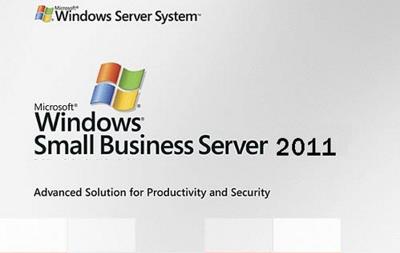Small Business Server 2011 Iso

Applies To: Windows Server 2016 Essentials, Windows Server 2012 R2 Essentials, Windows Server 2012 Essentials. This guide describes how to migrate an existing Windows Small Business Server 2011 Standard domain to Windows Server® 2012 Essentials on new hardware, and then to migrate the settings and data.
Microsoft today released Windows Home Server 2011 and Small Business Server 2011 Essentials to TechNet and MSDN Subscribers. The evaluation edition of Windows Home Server 2011 is also expected to be released later this month.
File information is provided below from TechNet’s publicly viewable download page:
Client Restore Disc: Windows Home Server 2011 (x86 and x64)
– Filename: en_client_restore_disc_windows_home_server_2011_x86_x64_cd_658475.iso
– SHA1: 86B6F394B232230D1F9A4097B24757F9A12C7FC4
Server Install Disc: Windows Home Server 2011 (x64)
– Filename: en_server_install_disc_windows_home_server_2011_x64_dvd_658487.iso
– SHA1: A01A33EB26DE2A3E91C9C0371B549977173725F3
Client Restore Disc: Windows Small Business Server 2011 Essentials (x86 and x64)
– Filename: en_client_restore_disc_windows_small_business_server_2011_essentials_x86_x64_cd_664348.iso
– SHA1: 678403787D1E364F65FF5BF27D3988C52792F132
Server Install Disc: Windows Small Business Server 2011 Essentials (x64)
– Filename: en_server_install_disc_windows_small_business_server_2011_essentials_x64_dvd_664391.iso
– SHA1: 58FE96CD15B46107C0030713CB75A18B5FAFEF69
Share This Post:
-->Applies To: Windows Server 2016 Essentials, Windows Server 2012 R2 Essentials, Windows Server 2012 Essentials
This guide describes how to migrate an existing Windows Small Business Server 2011 Standard domain to Windows Server速 2012 Essentials on new hardware, and then to migrate the settings and data. This guide also describes how to remove your existing server from the Windows Server Essentials network after you finish the migration.
Note
To avoid problems during migration, the Windows Server Essentials product development team strongly recommends that you read this document before you begin the migration.
Note
To migrate your server data to the latest version of Windows Server Essentials, see Migrate to Windows Server Essentials.
To migrate your server data to the latest version of Windows Server Essentials, see Migrate to Windows Server Essentials.
Additional resources
For links to additional information, tools, and community resources to help guide you through the migration process, see Windows Small Business Server Migration.
Terms and definitions
Source Server: The existing server from which you are migrating your settings and data.

Destination Server: The new server to which you are migrating your settings and data.
Migration process summary
This Migration Guide includes the following steps:
Prepare your Source Server for Windows Server Essentials migration. You must ensure that your Source Server and network are ready for migration. This section guides you through backing up the Source Server, evaluating the Source Server system health, installing the most recent service packs and fixes, and verifying the network configuration.
Install Windows Server Essentials in migration mode. This section describes the steps you should take to install Windows Server Essentials on the Destination Server in migration mode.
Join computers to the new Windows Server Essentials server. This section covers joining client computers to the new Windows Server Essentials network and updating Group Policy settings.
Move SBS 2011 settings and data to the Destination Server. This section provides information about migrating data and settings from the Source Server.
Enable folder redirection on the Windows Server Essentials Destination Server. If folder redirection is enabled on the Source Server, you can enable folder redirection on the Destination Server, and then delete the old Folder Redirection Group Policy setting.
Demote and remove the Source Server from the new Windows Server Essentials network. Prior to removing the Source Server from the network, you must force a Group Policy update and demote the Source Server.
Perform post-migration tasks for Windows Server Essentials migration. After you finish migrating all settings and data to Windows Server Essentials, you may want to map permitted computers to user accounts. Dwa 652 drivers for mac.
Run the Windows Server Essentials Best Practices Analyzer. After you finish migrating settings and data to Windows Server Essentials, you should run the Windows Server Essentials BPA.
Several of the migration procedures require that you open a command prompt window as an administrator.
To open a command prompt window on the Source Server as an administrator
Click Start.
In the search box, type cmd.
In the list of results, right-click cmd, and then click Run as administrator.
To open a command prompt window on the Destination Server as an administrator
On the Start screen, in the search box, type cmd.
In the list of results, right-click cmd, and then click Run as administrator.